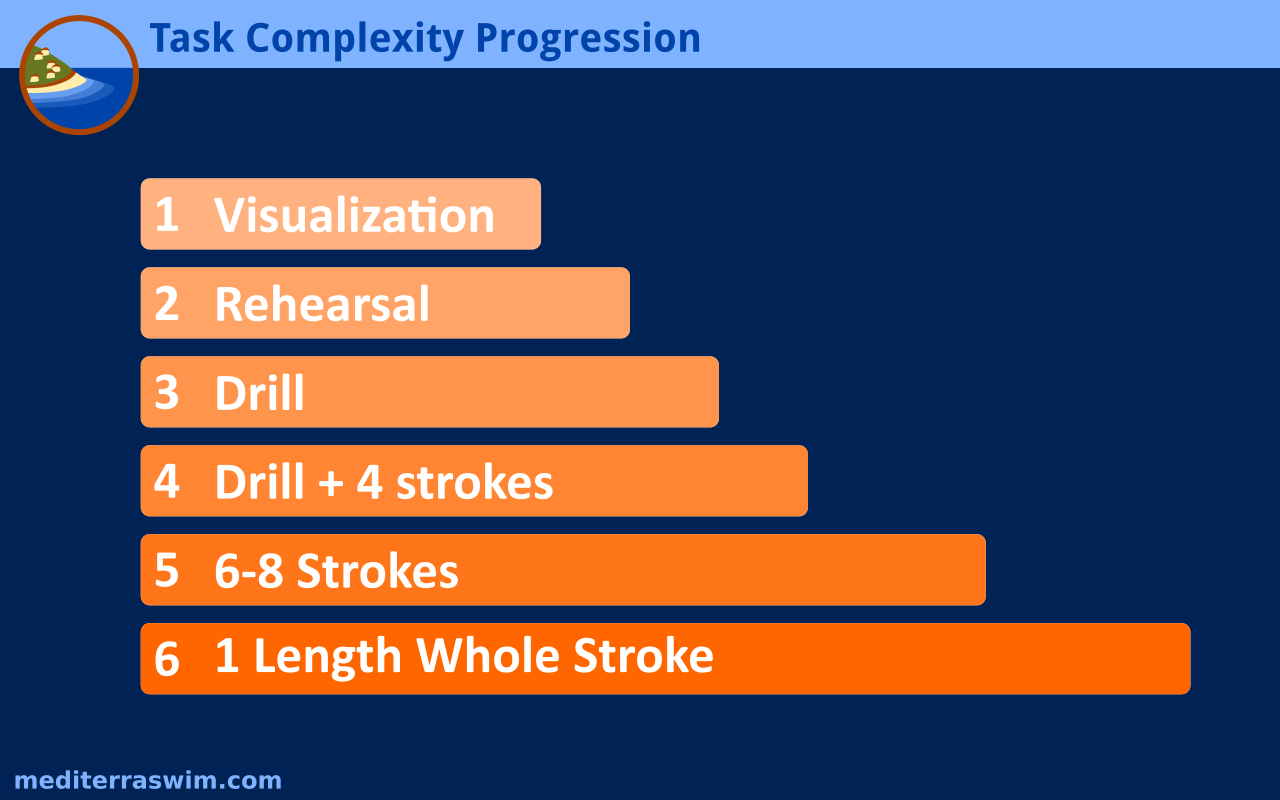A practice is made up of tasks. Tasks can use any arrangement of training tools: rehearsal, drill, and whole stroke swimming.

Each task is focused on developing a skill while it also challenges your fitness – and fitness involved both the body and the mind, working together. A task is simply an activity you design which has a specific purpose and measurable goal, and it fills a certain distance or amount of time.
Here are the steps to follow for designing your own task. Only at first does this planning process seem mechanical – once you are familiar with personalizing each activity you set for yourself, this process will become far more intuitive, and easy to make decisions about.
Step 1
Decide what specific skill you want to work on.
Step 2
Choose what focal points you need to use.
Step 3
Choose the rehearsal and drill that will address that skill.
Step 4
Choose what distance of whole stroke you will use to test it (from # of strokes to # of lengths)
Step 5
Choose what mixture of drill and whole stroke you will use (repeat composition), and what number (# of repeats).
Step 6
Decide what kind of rest interval to use (passive or active) and how you will measure that rest time (in terms of seconds, of # of breaths, or lengths)
Step 7
Choose what subjective measurements you will use: perceived effort, ease of control, awareness of fine details.
Step 8
Choose what objective measurements you will use: stroke counting, tempo trainer control.
Step 9
Define in terms of your subjective and objective measurements how you will measure success of this task – how will you know clearly that you’ve either succeeded or failed in achieving improvement in the skill you’ve chosen to work on?
Step 10
Estimate how much time it will take to accomplish this task and insert it into your practice plan.
Example of designing a task step by step:
1) Recovery Arm
I want to work specifically work on the elbow lead and high elbow Mailslot Moment.
2) Focal Points to use:
- A = Swing Elbow to Ear
- B = Drag Fingers Behind Elbow
- C = Mailslot
3) Rehearsal = Standing rehearsal practicing the feel for the high elbow over my head at Mailslot
Drill = Swing Switch with 3 second Pause at Mailslot
4) 6 stroke segments, and whole stroke lengths
5) 3 Rounds of:
- 2x Drill for 6 seconds + 6 Whole Strokes
- 2x 25m Whole Stroke, holding the same Focal Point
- Use one FP for each Round.
6) Passive rest, 8 nasal breathes at the wall
7) Ease of control, awareness – it needs to feel easier and notice that it is correct.
8) Counting strokes on whole stroke lengths
9) It feels easier (subjective) to achieve my target SPL (objective) today while focusing on these points.
10) It should take about 15 minutes to go through this task.

